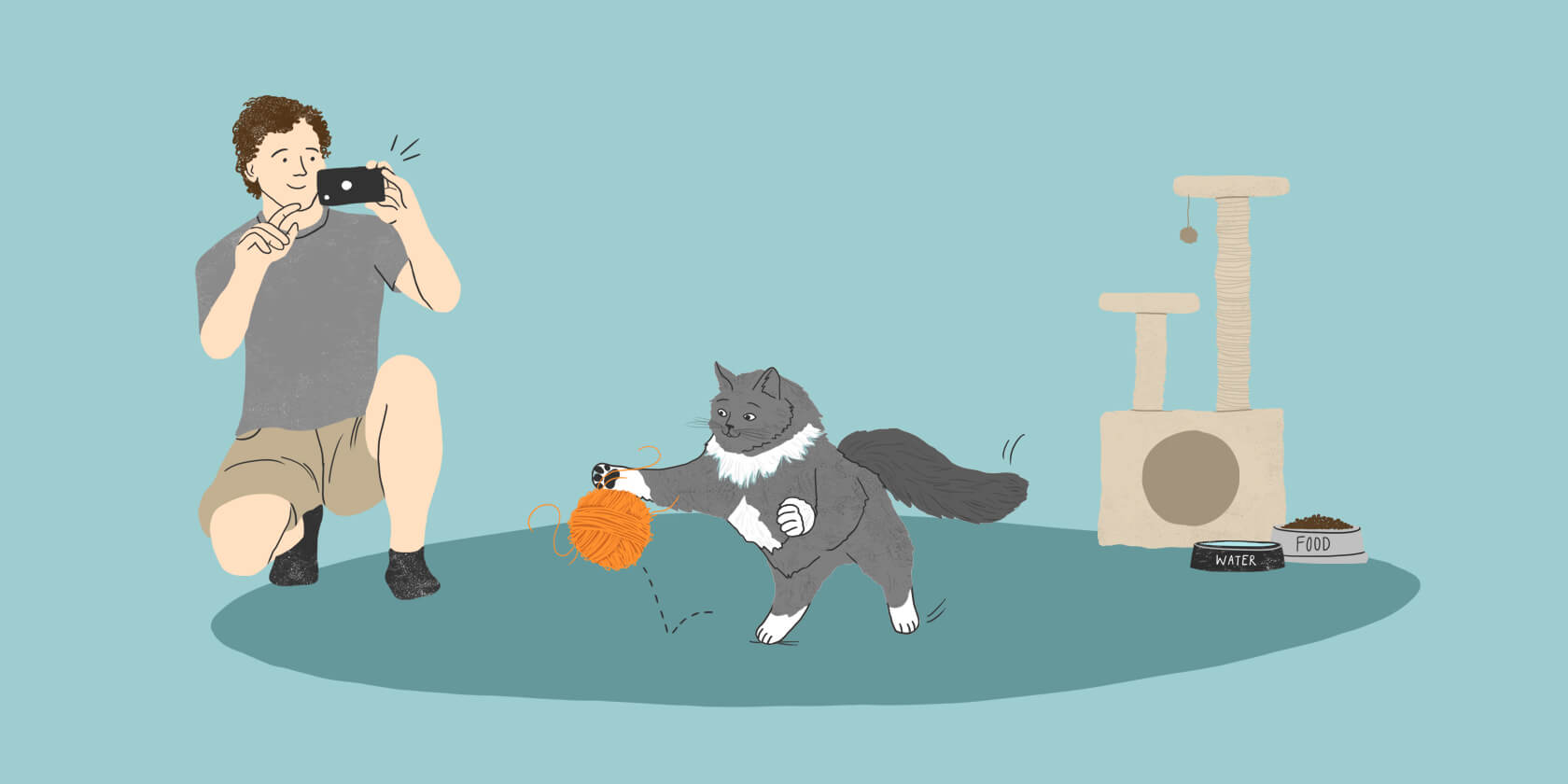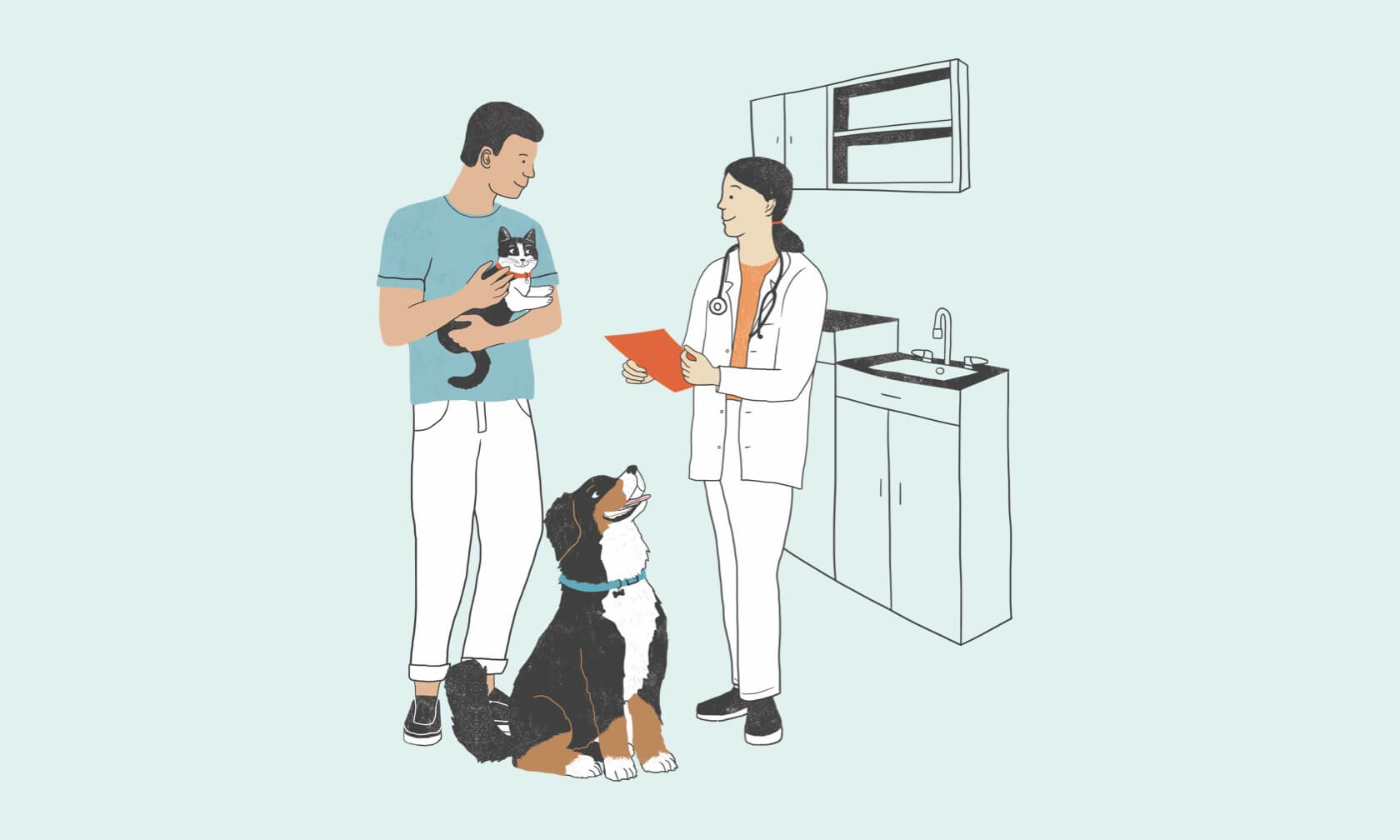As a caring pet owner, you know when something's not quite right with your cat. With that said, it can be difficult to describe what you see and how it's different from past behaviors. Using video to show your cat’s normal and abnormal behaviors can be a great solution, whether during a simple annual exam or a special visit to address possible pain or illness.

How Video Can Help You, the Pet Owner
When you see your cat every day, it’s hard to notice subtle changes that develop over time. Using video can highlight your cat’s behaviors — helping you see how your cat moves, acts, and reacts in a whole new light. Those behaviors might uncover signs of pain that cats try to hide from their owners. Further, it’s in a cat’s nature to hide their pain, so they main not show signs or symptoms that they’re hurting (even in front of their owners). If you have video monitors around your house, they may pick up some of those signs and symptoms while you’re out of the room. Video also creates an ongoing record of these medical and behavioral changes as your cat ages.
Capturing videos of your cat’s normal, everyday behaviors today (while they’re healthy), isn’t just fun, it can also help you catalog any changes over time. Thanks to our smartphones, we have a way to capture helpful (and let’s face it, adorable) footage of our cats, with a date stamp, that owners and veterinary teams can both use to track those changes as they progress over time.
How Video Can Help You Communicate with Your Veterinarian
It's hard for veterinary teams to assess your cat’s mobility or pain when they’re nervously clinging to their carrier or the top of the exam table. Some common behaviors at home, such as going up and down stairs and litter box behaviors, can't be replicated in the clinic. Video allows your veterinarian to see your cat in real life — how they act at home and in their normal environment.
Whether you’re doing a virtual or in-person visit, you can often send in video ahead of your appointment, so your veterinarian has an opportunity to review and digest before examining your cat. This ensures that they see what’s really going on, especially if your cat doesn’t cooperate during your virtual appointment or clinic visit. Seeing the video ahead of time can also help your veterinary team determine if they need to see your cat in person and how soon.
Tips for Taking the Most Effective Videos of Your Cat
With today’s technology, almost everyone can capture good quality video on their phone. Here are a few basic tips:
- Set up your camera in a well-lit area
- Turn on all the lights and open blinds for natural light
- Use a smartphone tripod or stabilize your camera using books on either side of the phone placed in a horizontal orientation
For your veterinarian, be sure to:
- Film the entire cat in the video, not just one part of their body
- Capture footage when your cat is at home, relaxed, and where they feel safe
- Try to film from about three feet away
- Keep your video under two minutes in length
- Edit out any non-essential footage to help your veterinary team see what’s really important
- If you're recording the sounds your cat is making, try to get as close as possible, so the microphone picks it up
- Capture specific behaviors, particularly for cats with suspected arthritis and/or pain:
- Jumping up onto a surface
- Walking
- Climbing up and down stairs
- Resting
- Going in and out of a litter box
- Running or chasing a toy
If you’re concerned that your cat could be in pain or may be exhibiting osteoarthritis symptoms, focus on getting footage that demonstrates the symptoms you’re seeing (a reluctance to get up and chase a favorite toy that rolls by, difficulty lying down and getting comfortable in their favorite bed, crying or vocalizing in any position (even in the litter box), or sitting at the bottom of the stairs despite you or a tasty treat coaxing them upward).
By following these steps (and taking the Feline Osteoarthritis Quiz for examples of the actions to capture on video) you’ll have a much better understanding of your cat’s normal and abnormal.
ZPC-00942R2



